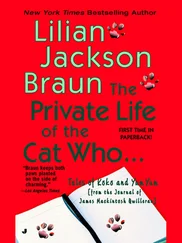In early cultures the heart’s beating was associated with the movement of blood in the body, which was indicated by the pulse and by the rhythmic spurting of blood from severed arteries. The pulse was used in the diagnosis of health and illness, vigour and death in the medicine of ancient Greece, India and China. The violent colour of blood, its dramatic eruption from wounds, its ability to rapidly congeal once outside the body, and the fact that its loss was associated with death, all contributed to the idea that it was intimately connected with life. Indeed for some cultures, blood was seen as the substance of life itself. Many stone-age burials have been discovered where the bones have been covered with a red ochre probably representing blood, which would suggest that the connection between blood and life (or death) was very early indeed. The drinking of blood, either literally or symbolically (as in the Christian Eucharist), was a means of transferring the soul/energy of the human, animal or god to the drinker.
Our caveman has now got some theories, but it does not seem to be doing his cavewoman any good. She has gone cold. The caveman now needs to add one more item to his list of differences between living and dead: body heat. The body temperature of living mammals and birds is normally higher than their surroundings, cooling to that of their environment at death. If our body temperature is lowered by more than a few degrees, if for example we fall into freezing water, then we rapidly die. Clearly heat has an important connection to life. In pre-industrial times, the only significant producers of heat were animals, fire and the sun. Aristotle, for example, thought of the life-force partly as a kind of fire inside the body. And the association between heat (and movement) and the life-force, may well explain the widespread belief that the sun was a god, and the use of fire in religious rituals. In fact there are a number of other important similarities between life and fire: both are produced by the burning of organic matter (fuel/food) with air (supplied by a bellows or breathing), which generates heat, movement, and residual waste (ash/faeces). This analogy was important both in ancient Greece and in much more modern times. For it was the key concept in the development of the modern scientific idea of body energy, although the theory could not be used productively until chemical concepts of burning were developed by Lavoisier in the eighteenth century.
Back with our caveman, things are looking bleak. The cavewoman’s body has started to decay. First the flesh rots away, leaving the skeleton, then the bones themselves disintegrate to dust. Although the process is slow, its effect is dramatic: we start with a highly organized human body and end with a pile of dust, which merges into the soil. There is obviously little hope of reversing this process, and nowhere for the soul to hide afterwards. This is clearly the great disaster of the human condition. Many cultures have expended immense efforts trying to either prevent or circumvent this problem. The ancient Egyptians were the most zealous, utilizing mummification, pyramids, tombs, sacred objects, temples, an extensive priesthood, literature and mythology to evoke a whole parallel world beyond death. In Egypt, bodies were at first buried in dry sand in which they could survive for up to a thousand years, but were shrivelled and dried out. Subsequent use of stone coffins resulted in the flesh disappearing – supposedly eaten by the stone. This is the origin of the Greek word sarcophagus (meaning ‘flesh eating’) perhaps reflecting a prehistoric notion that the body and soul of the dead could enter into and be preserved in stone. The bodies were, in fact, eaten by micro-organisms too small to be seen. The Egyptians developed mummification to prevent this process, although of course lacking any knowledge of the existence of bacteria. Mummification was, however, never entirely successful, and the final resort of both the Egyptians and later cultures was to circumvent the problem by favouring the idea that the mind or soul could separate from the body at death, and either live independently (in heaven or another world), or in other objects (such as in statues), or another body (reincarnation).
The decay of the flesh leaves the bones. Some cultures believed that the bones represented the essential core of the human, the flesh its disposable clothing. The bones contained a vital fluid, which we would now identify as the marrow encased by major bones, the spinal cord encased by the spine, the brain encased by the skull, and the cerebro-spinal fluid permeating the cavities of the brain and spine. All these ‘bones’ surround, as if protecting, a greyish-white gelatinous material or fluid, which in ancient Greece was thought to be the origin of semen, another off-white gelatinous fluid. Thus, semen was thought to be derived from this vital gel, a kind of creative force, constituting the brain, spinal cord and bone marrow. The Romans consequently believed that men’s tiredness after orgasm and ejaculation was due to the draining of creative force throughout the body. The myth that masturbation causes blindness may originate from this ancient concept that the sperm partly derives from the brain. In Greek legend, gods and goddesses were born directly from Zeus’s head (Athena) or thighbone (Dionysus), because this is where the creative force was thought to be located. The belief that bones were the essential core of the human being, encasing an individual’s procreative powers, may have motivated the preservation of the bones of ancestors in many cultures.
The body’s decay after death appears the counterpart of its growth in life. The growth of the body is dependent on food, and it is all too evident that when a human stops eating, they stop growing, shrink, then die. Clearly there was something in food or in eating that was related to life, and this link was all the stronger because food consisted of recently dead animals or plants. Food could thus be thought of as containing either a soul or soul-nourishment. In most early cultures, there were religious rites involving human or animal sacrifice and the eating of the flesh. Often the food was blessed or otherwise transformed so that a god or soul might enter and be absorbed into the body of the eater. The Christian mass is partly derived from earlier Greek Orphic and Bacchic rituals, where food was magically transmuted into the body and soul of a god, which then entered into the body and soul of the person eating. A version of this is described in Euripides’s Bacchae , where the normally well-behaved, upper-class ladies of Athens achieve an ecstatic state, hunting a wild animal representing the god Dionysus, tearing it limb from limb and devouring the raw flesh. This was a means of obtaining ‘enthusiasm’, which in Greek means the entry of a god into the person. Thus, enthusiasm is a kind of mind energy, and these rituals were a means of obtaining it.
The idea that food was incorporated into the body – that when eaten, the substance of the food became the substance of the body – predates Classical Greece, but just how this transformation might occur was not elaborated until the Greeks devised various schemes. One idea was that food was broken down and transformed into blood, then congealing (as in blood clotting) in various ways to produce the body’s organs. While this might explain the growth of children, it did not really explain the fact that although adults do not grow, they require large amounts of food. Later the idea of ‘dynamic permanence’ was developed by Alcmaeon in the sixth century BC, according to which the structure of the body was continuously breaking down and being replaced by new structures and substances derived from food. This would account for the fact that the body slowly decayed after death, when no food could be eaten. The general concept that material things consist of smaller components, which can be rearranged to give all the different forms or structures of things (such as food or the body), was an extremely important and fruitful one. It was particularly developed by Greek philosophers, such as Plato and Democritus, leading to much speculation as to what the simple components might be, for example water, fire, air or earth or atoms of different shapes.
Читать дальше












